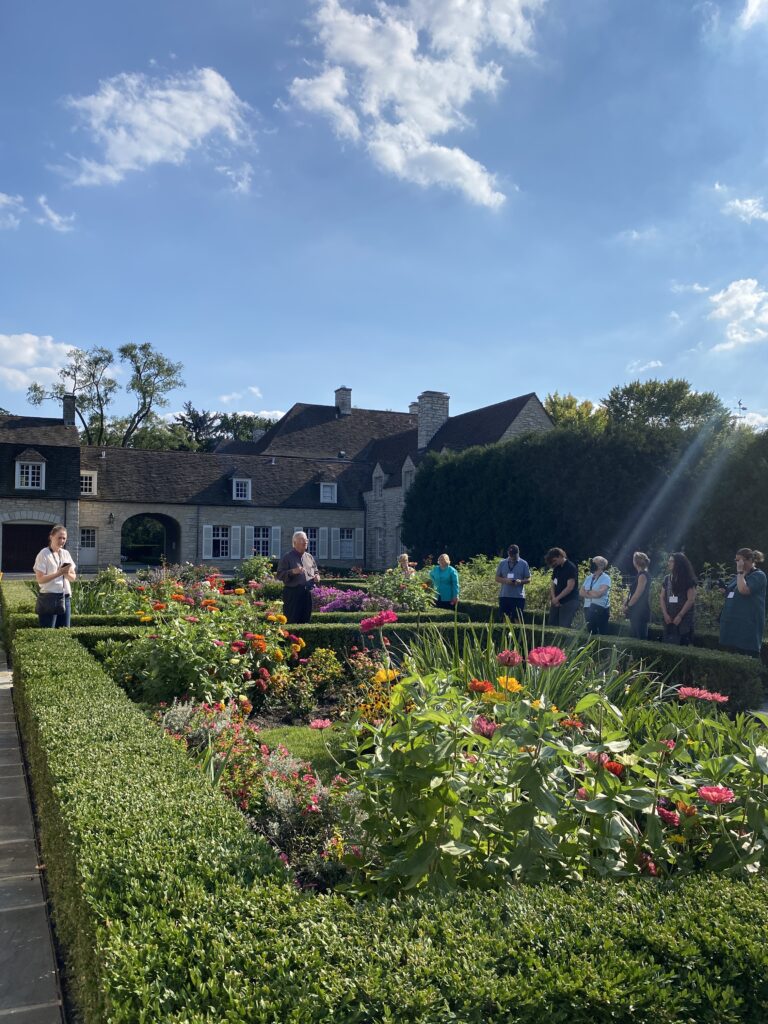Earlier this month we went to Chicago as a team and attended the 2022 Custom Residential Architects Network (CRAN) Symposium. The symposium ran from Thursday to Sunday and was filled with informative lectures, house tours and opportunities to connect with other residential architects from across the country. We last attended CRAN in 2019, when Studio MM was made up of only four people. This time around 15 of us were able to attend – we missed Colbi and Rachel, our most recent hire.
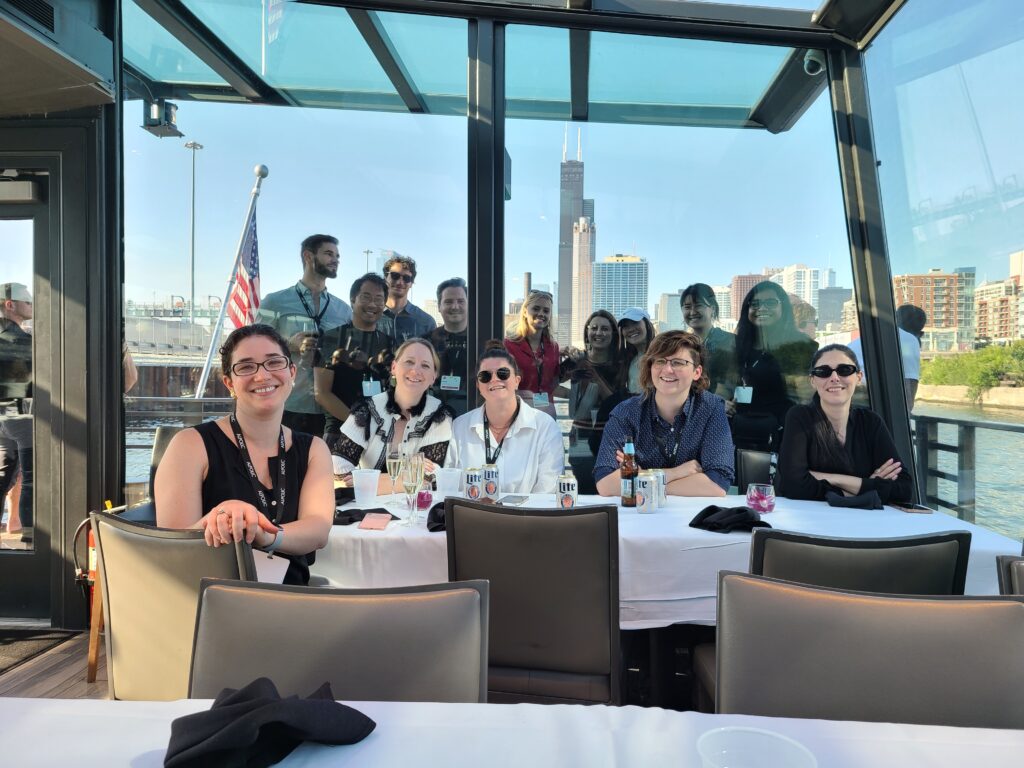
Team Bonding
While much of CRAN was about connecting with other architects and deepening our knowledge of residential architecture, it was also a great chance to spend time together. We kicked things off on Thursday with a opening reception cocktail party. Since our office is now scattered between New York, the Hudson Valley, Connecticut and Boston, it was a great chance to see each other in person and catch up. We love our team offsites and team days and were all excited to spend time together. We continued the festivities with a team dinner and a visit to The Bean – we couldn’t miss it while in Chicago…
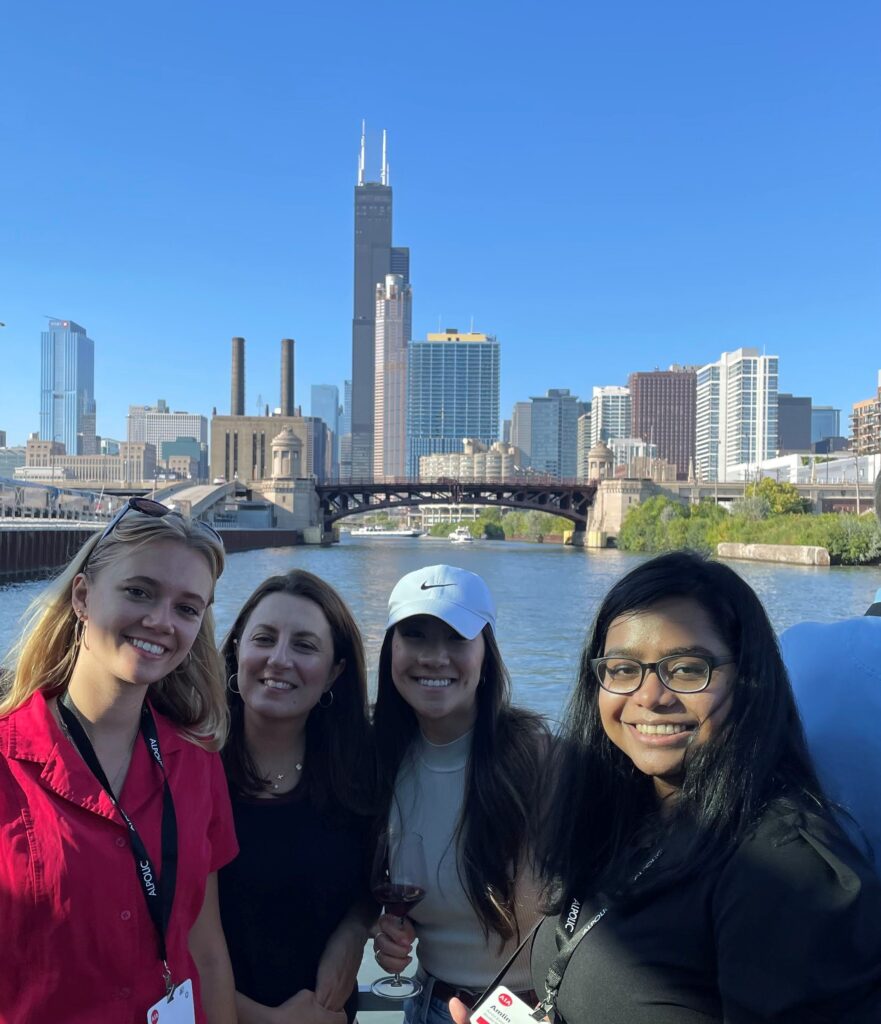
Noteworthy Lectures
Much of Friday and Sunday were spent absorbing informative lectures on a broad range of topics. You could think of it as a crash course in the residential architecture of Chicago combined with a spotlight on what residential architects are currently grappling with and thinking about.
Stuart Cohen, Susan Benjamin and Lee Bey presented a broad overview of the historical context of Chicago’s residential architecture. We started by looking at the most famous of Chicago’s architecture – from Frank Lloyd Wright to Mies and George Fred Keck’s House of Tomorrow. Architectural historian Susan Benjamin filled out some of the stories behind these great homes, giving us a sneak peek at the clients behind some of these homes. Lee Bey, architectural critic for the Chicago Sun Times, gave us a fantastic overview of modern homes on Chicago’s South Side, many built by a Black middle class in the 1950’s.

In the afternoon, we transitioned to lectures focusing on the business of running a firm. Dean Lucas shared the story of his architecture design collective, Beehyyve which brings small, minority, and/or women owned businesses together to work on larger projects. It was exciting to hear about a project that focused on empowering their surrounding community. We also heard from liability insurance broker and risk manager, Melissa Roberts, and construction lawyer, Eric Singer, who gave great advice about contracts, insurance and risk management. While that might not be what we consider the most glamorous side of architecture, it’s a critical part of running a business!
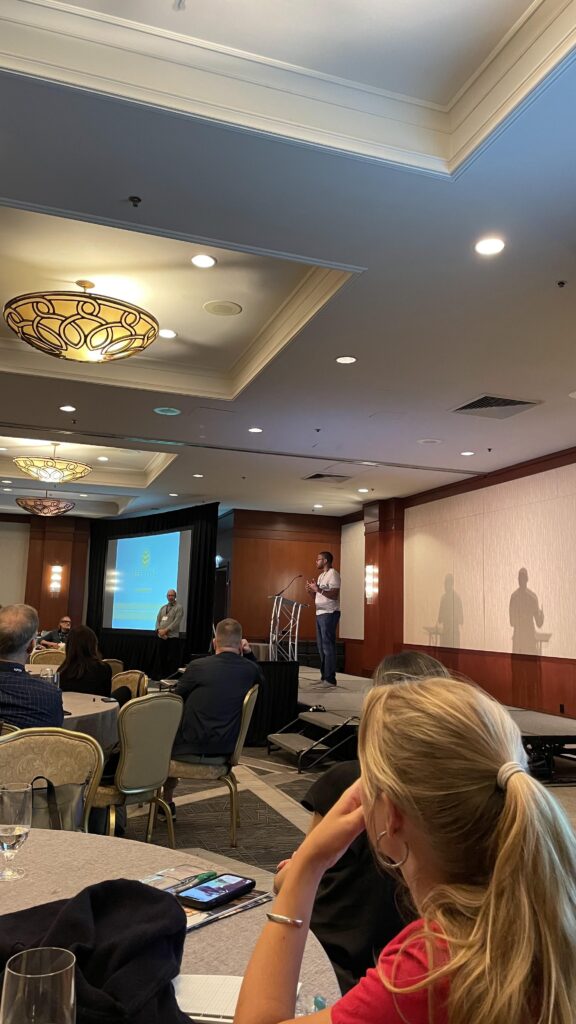
Sunday featured two great lectures on ways to sustainably design residential architecture. Christine Williamson, the pioneer of Building Science Fight Club, shared her top three tips for designing energy efficient homes. It was amazing to hear from someone who is deeply passionate about making efficient design an achievable goal for both homeowners and small firm architects. We then heard from Nathan Kipnis and Bonnie McDonald, who did an innovative renovation on a home built in 1907 in Chicago. We learned how home renovations can be one of the best ways to retain embodied carbon and to lessen our impact on the climate crisis.
Finally, the symposium closed out with inspiring presentations by three current Chicago architects – Tom Shafer, Celeste Robbins and Michael Graham. An engaging panel discussion with Joclyn Oats followed – we appreciated her thoughtful and challenging questions and the three unique perspectives of these architects – it was a great way to close out our time in Chicago!

Glass-Topped River Cruise
Friday afternoon’s activity got us all out of the lecture hall and onto a glass-topped architectural boat tour down the southern branch of the Chicago River. It was a fantastic way to explore the big names of Chicago architecture, from works by Mies van der Rohe to Jeanne Gang. Chicago’s architectural history is fascinating, and the skyline features many notable buildings and innovative structures that cover decades of development. We also really enjoyed seeing Chicago’s Riverwalk, a more human-scaled intervention along the side of the Chicago River that features unique outdoor “rooms” for different kinds of play.
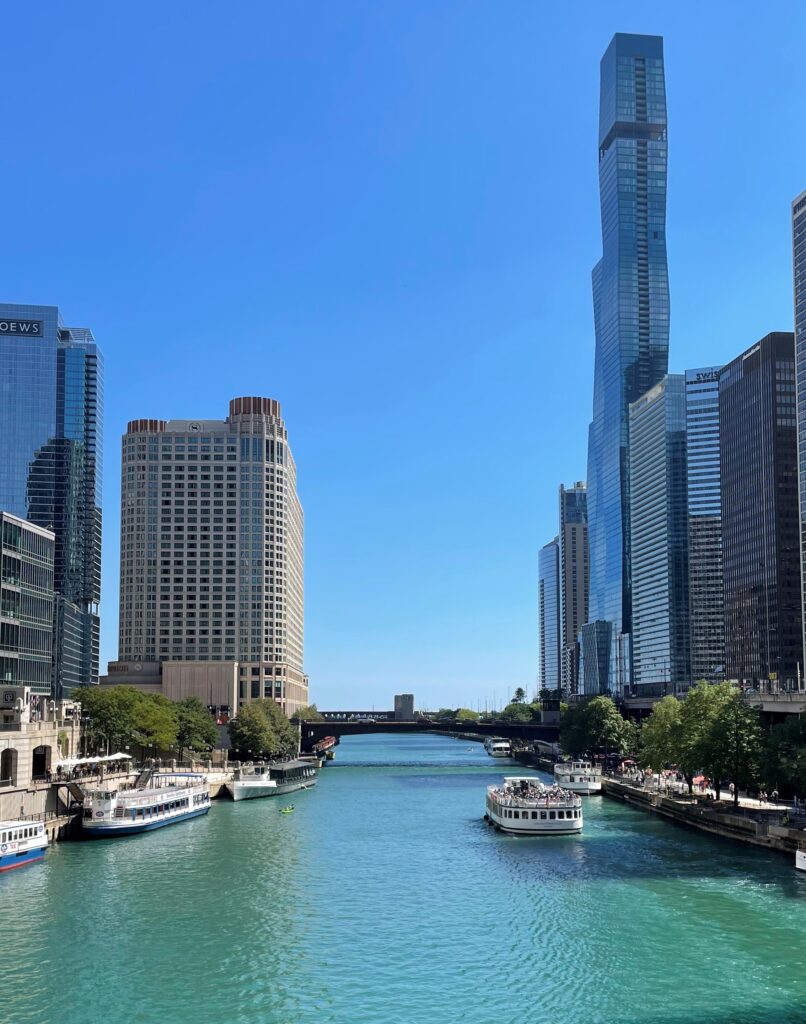


Sponsors and Materials
CRAN is generously sponsored by a host of manufacturers and vendors who set up booths just outside our lecture hall. During breaks, we were able to browse the showcase and speak to a variety of vendors. Some we know well, while others we were excited to meet for the first time. It was a great chance to explore new products and materials so we can be better guides and advocates for our clients.
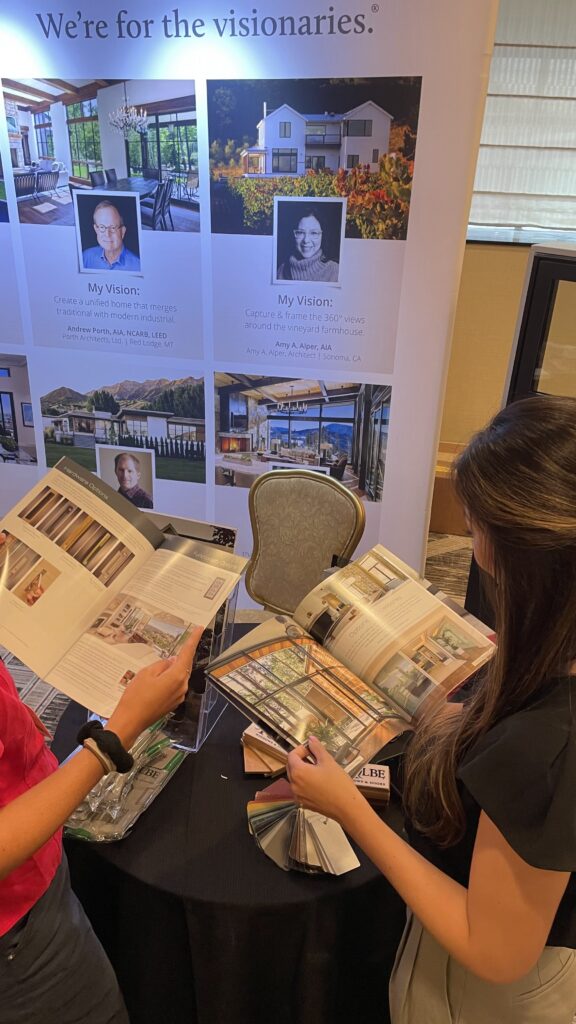
We also particularly loved checking out the products on offer by Kalamazoo. They graciously hosted us at their showroom in Chicago for a grill demonstration and lots of delicious snacks and cocktails. We had a great time asking their chefs for the recipes and admiring their products!
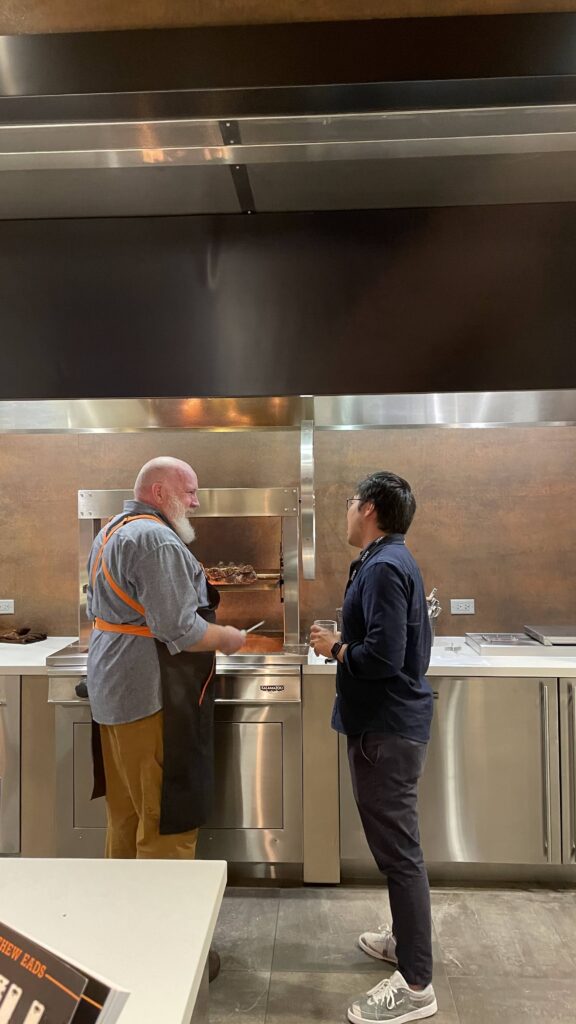
House Tours
Of course, one of the most amazing parts of CRAN – and the part we might look forward to the most – are the home tours! This year, the tours spanned a variety of neighborhoods, decades and architects and gave a great overview of much of what we had discussed the day prior. We started the day at Frank Lloyd Wright’s Robie House, where we admired the detailed mortar work and the thoroughness of his design details.

We next checked out Glessner House by HH Richardson, where period details have been lovingly restored and original artifacts from the home’s original inhabitants abound. Next up were two modern homes. We were all enamored by the stair details and thoughtful design for both natural light and privacy at Zinc House by dSPACE Studio. At House in the Woods by Celeste Robbins, we could not get enough of the exceptionally executed modern details – from HVAC grilles to thoughtful modern door details, we were enamored!

Finally, we were able to visit Innisfail II by David Adler, lovingly restored by architect Adrian Smith. We were stunned by the before and after photos of this estate and the care with with Adrian has restored this home. We closed out our tours at Crab Tree Farm, designed by Solon Spencer Beman, Harvey Ellis, and Vinci Hamp Architects. The modern addition was a favorite, but we also loved seeing the Arts & Crafts period details in the older structures. The best part of the home tours was really how so many people on our team kept finding new and different details in each home – we ended the day feeling inspired. We can’t wait to take everything we learned and start applying it to our designs and to Studio MM!
